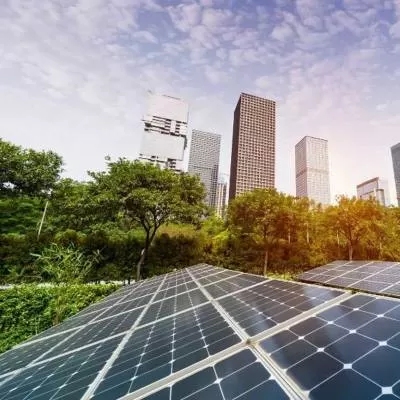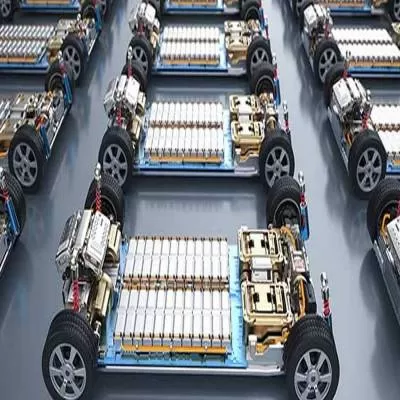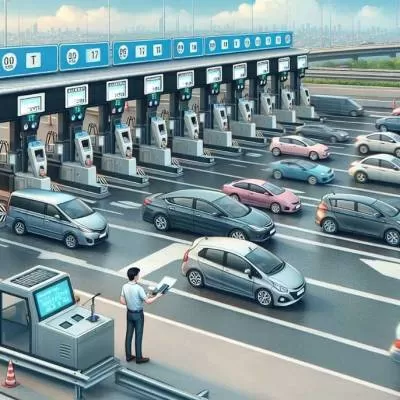- Home
- Real Estate
- Huge shortage of R&D approach in construction
Huge shortage of R&D approach in construction
When you combine end-to-end integration with technological innovation, anything is possible. And, design build firm Katerra is putting modern technology to work at all levels of building design and construction to help address some of the industry’s most entrenched challenges. The firm’s portfolio of products focuses on optimising building structures and systems, creating beautiful interior spaces, and developing smarter building operations.
In an exclusive video interview hosted by CONSTRUCTION WORLD, Nejeeb Khan, Country Head-Katerra, India, discusses R&D and technology in construction, sectors to drive demand going forward, and more...Excerpts:
Impact of the lockdown on activities: We are able to restart our factories and activities slowly, not at full capacity. But it is a good start for us after 45 days of close down. Speaking about our raw materials capacity at our factory, we are good. Most of our supply chains are local as we are not facing any such challenges in this area as now the movement of cargos and materials have also been relaxed.
Besides, in the 45 days that we were closed down, we are able to do a lot of design work as Katerra is a full-stack, which means a design and build company. So we made use of the lockdown to do detailed drawings. All our architects have been able to get headway into the design part and fabrication part of our drawings. And we are now slowly getting back to the manufacturing mode.
R&D in construction: Construction is one industry which is very behind in R&D and technology. Globally, every company's every other field invests a lot in technology and R&D. And although construction is about a $10-12 trillion industry globally, and production a 250 billion industry annually in India, there is still definitely a huge shortage of the R&D approach in our industry. At Katerra, we spent more than $18 million just on R&D.
Coming back to the lockdown, it was an opportunity for us. For example, one of the products we have developed is a 500-bed isolation hospital that we could construct in 15 days. We have manufactured every element that will go into the construction of this hospital. We have done the design, the joint connection details, how it should be put together, how it should be taken to the site, all of it. So today we are capable that if Mumbai wants to put together a 500-bed isolation hospital, we are able to produce that component within two to three days and then install it in another three to four days, and the hospital will be on track within about two weeks.
Similarly, we have developed a product for slum rehabilitation. It is a 30-sq m apartment housing, which instead of columns and beams and slabs, we constructed this building using each unit of the disk as a lego block. We have also developed a similar product for a student hostel.
Automation in construction: Yes, there is a migrant labour issue in our country. And we are all seeing this reverse migration happening and labourers going back to their villages. But the advantage for us at Katerra is that we do a lot of automation in construction. For instance, if in traditional construction, you need a 1,000 people for a job, we probably require just 200 people. So there is significant reduction in the labourers we use on site because our construction sites have more of installation works. Similarly, our factories are also automated factories, and so not very labour intensive. Also, we do a lot of skilling for our labourers, whom we actually call staff; and we usually have most of them on our own payroll.
Sectors of focus: A lot of our work is happening on the commercial sector – office buildings and shopping malls. Now of course, COVID-19 has given a huge shock to these two industries. But I strongly believe this is only short-term. We are also looking at other industries such as pharmaceuticals buildings, educational buildings, hospitals, slum rehabilitation projects, data centres. We have the capability to install buildings extremely fast, and a lot of people think what we are constructing is like a PEB building, but it is actually much more. It is more of precast or concrete buildings.
Timeframe to bounce back:
If you look at the construction industry all over the world, in most countries, construction is considered as an essential industry. And so in a lot of these places even though there is a lockdown, the construction industry continues to be going as an essential industry. Similarly, the government here too should relook at the policy in India because many sites have labour on site and we could also deal with the issue of migrant labour better.Having said that, I think the effects of the pandemic are going to be short-term. The government is already starting up with a lot of incentives to push the economy forward. We also have a unique opportunity of a lot of industries moving from China to India. So definitely, this is an opportunity where our economy can bounce back fast. We are all ready to move forward and to embrace a much faster growth in the coming years.
Watch the full video on what Nejeeb Khan has to say on automation in construction and more...
Stay tuned for Construction World’s FREE webinars. View our complete webinar calendar and previous webinars here.
- technological innovation
- design build
- Katerra
- modern technology
- design
- construction
- challenges
- building structures
- systems
- interior spaces
- smarter building
- Nejeeb Khan
- lockdown
- factories
- full capacity
- raw materials
- architects
- manufacturing mode
- Construction
- R&D
- technology
- construction
- production
- R&D
- hospital
- slum rehabilitation
- columns
- beams
- slabs
- student hostel
- Automation
- migration
- migrant labour
- labourers
- automation in construction
- COVID-19
- PEB building
- pharmaceuticals
- educational buildings
- slum rehabilitation projects
- data centres
- concrete buildings
- precast
- construction industry
- pandemic
- China
- India
- opportunity
- government
- construction
When you combine end-to-end integration with technological innovation, anything is possible. And, design build firm Katerra is putting modern technology to work at all levels of building design and construction to help address some of the industry’s most entrenched challenges. The firm’s portfolio of products focuses on optimising building structures and systems, creating beautiful interior spaces, and developing smarter building operations.In an exclusive video interview hosted by CONSTRUCTION WORLD, Nejeeb Khan, Country Head-Katerra, India, discusses R&D and technology in construction, sectors to drive demand going forward, and more... Excerpts:Impact of the lockdown on activities: We are able to restart our factories and activities slowly, not at full capacity. But it is a good start for us after 45 days of close down. Speaking about our raw materials capacity at our factory, we are good. Most of our supply chains are local as we are not facing any such challenges in this area as now the movement of cargos and materials have also been relaxed.Besides, in the 45 days that we were closed down, we are able to do a lot of design work as Katerra is a full-stack, which means a design and build company. So we made use of the lockdown to do detailed drawings. All our architects have been able to get headway into the design part and fabrication part of our drawings. And we are now slowly getting back to the manufacturing mode.R&D in construction: Construction is one industry which is very behind in R&D and technology. Globally, every company's every other field invests a lot in technology and R&D. And although construction is about a $10-12 trillion industry globally, and production a 250 billion industry annually in India, there is still definitely a huge shortage of the R&D approach in our industry. At Katerra, we spent more than $18 million just on R&D.Coming back to the lockdown, it was an opportunity for us. For example, one of the products we have developed is a 500-bed isolation hospital that we could construct in 15 days. We have manufactured every element that will go into the construction of this hospital. We have done the design, the joint connection details, how it should be put together, how it should be taken to the site, all of it. So today we are capable that if Mumbai wants to put together a 500-bed isolation hospital, we are able to produce that component within two to three days and then install it in another three to four days, and the hospital will be on track within about two weeks.Similarly, we have developed a product for slum rehabilitation. It is a 30-sq m apartment housing, which instead of columns and beams and slabs, we constructed this building using each unit of the disk as a lego block. We have also developed a similar product for a student hostel. Automation in construction: Yes, there is a migrant labour issue in our country. And we are all seeing this reverse migration happening and labourers going back to their villages. But the advantage for us at Katerra is that we do a lot of automation in construction. For instance, if in traditional construction, you need a 1,000 people for a job, we probably require just 200 people. So there is significant reduction in the labourers we use on site because our construction sites have more of installation works. Similarly, our factories are also automated factories, and so not very labour intensive. Also, we do a lot of skilling for our labourers, whom we actually call staff; and we usually have most of them on our own payroll.Sectors of focus: A lot of our work is happening on the commercial sector – office buildings and shopping malls. Now of course, COVID-19 has given a huge shock to these two industries. But I strongly believe this is only short-term. We are also looking at other industries such as pharmaceuticals buildings, educational buildings, hospitals, slum rehabilitation projects, data centres. We have the capability to install buildings extremely fast, and a lot of people think what we are constructing is like a PEB building, but it is actually much more. It is more of precast or concrete buildings.Timeframe to bounce back:If you look at the construction industry all over the world, in most countries, construction is considered as an essential industry. And so in a lot of these places even though there is a lockdown, the construction industry continues to be going as an essential industry. Similarly, the government here too should relook at the policy in India because many sites have labour on site and we could also deal with the issue of migrant labour better.Having said that, I think the effects of the pandemic are going to be short-term. The government is already starting up with a lot of incentives to push the economy forward. We also have a unique opportunity of a lot of industries moving from China to India. So definitely, this is an opportunity where our economy can bounce back fast. We are all ready to move forward and to embrace a much faster growth in the coming years.Watch the full video on what Nejeeb Khan has to say on automation in construction and more...Stay tuned for Construction World’s FREE webinars. View our complete webinar calendar and previous webinars here.






















